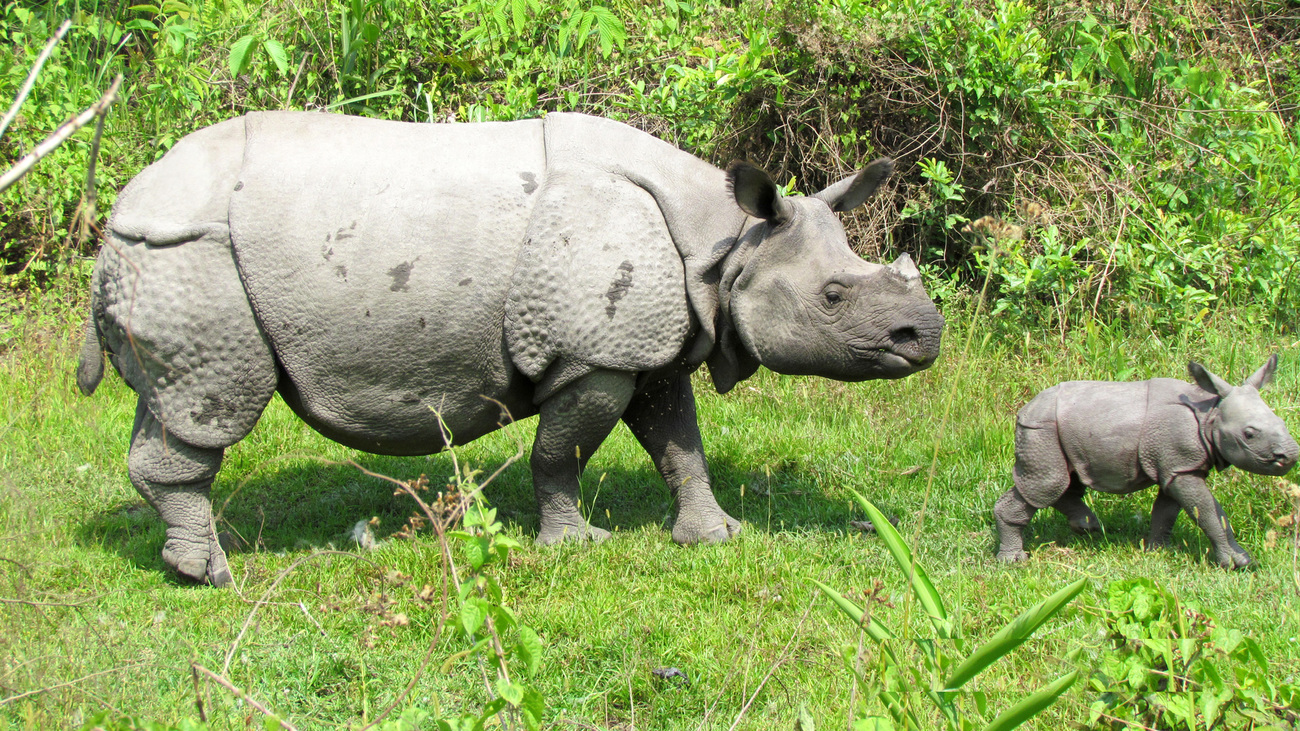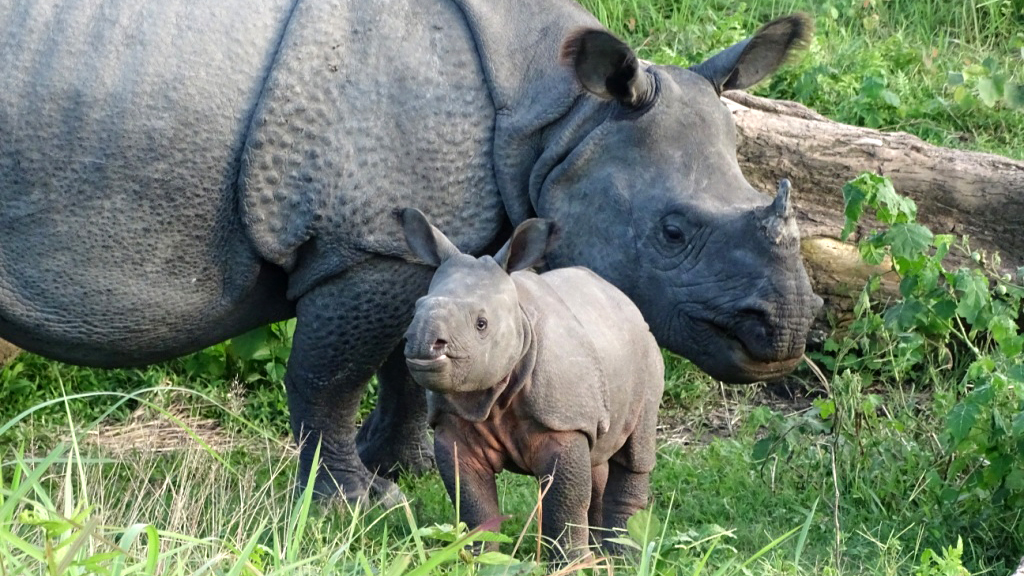Centre for Wildlife Rehabilitation and Conservation - India
Near Kaziranga National Park, animals are being threatened by a single highwayGanga’s story: How a stranded rhino calf became the matriarch of Manas
Ganga’s story: How a stranded rhino calf became the matriarch of Manas

Written by Lara Jackson, conservation biologist
In 2004, after the Brahmaputra River burst its banks in India’s Assam region during the monsoon season, the rescue team from Wildlife Trust India (WTI) and IFAW’s Centre for Wildlife Rehabilitation and Conservation (CWRC) were called to action. On boat, they rescued a tiny, stranded rhino calf separated from her mother. After attempts to reunite her with her mother were unsuccessful, this orphaned rhino was taken into full-time care at three months old. The team named her Ganga.
Nineteen years later, Ganga has been roaming India’s Manas National Park as a wild rhino for a decade and a half. Just three years after her release into Manas, Ganga became the first rehabilitated and released rhino in India to give birth in the wild. She gave birth to a second calf just 26 months later, instead of the typical average gap between calving of four years. In February 2023, Ganga was spotted with her fourth calf and is now a grandmother. Because of Ganga’s incredible tale and her success as a mother, the WTI and IFAW team consider her to be the matriarch of Manas.
Rehabilitation
When Ganga was rescued, she was so young that she should have still been with her mother. To ensure her survival, the keepers at CWRC stepped in to become her surrogate mother.
The aim of the CWRC is to release animals back into the wild once they’ve been rehabilitated, but rhino calves don’t leave their mothers until they’re about three years old. To ensure that rhino calves (and other residents) do not become too habituated to human presence, only the keepers and veterinarians are allowed contact with their patients. Implementing a policy of minimal human interaction gives the animals the best chance of reintegration when they’re released back into the wild.
Preparing for the wild
Throughout their time at the centre, enrichment activities provide the rhinos with psychological stimulation. These include cognitive challenges—for example, deep pools teach rhino calves to swim and dive for aquatic plants, and certain plants are concealed so they learn to find and correctly identify them. The severity of annual floods means that there is usually more than one rhino calf being raised and rehabilitated by the team at CWRC. This gives them the opportunity to have important social interactions.
The aim of these enrichment activities is to ensure that the rhino calves have all the necessary skills needed to survive when they are released back into the wild. In fact, animals that are cognitively stimulated by regular enrichment activities have been shown to be more at ease and display explorative behaviours even in unknown environments. This is critical considering the rhino calves will be translocated to Manas National Park.

A new home: Manas National Park
Although the rhino calves were rescued from Kaziranga National Park, in India’s Assam region, the rehabilitated calves are released into Manas National Park—a protected area located 250 kilometres away. There are several reasons for this choice. First, in Kaziranga National Park, the calves would have to establish their own territory in an already crowded space.
Second, IFAW and WTI are trying to re-establish a viable rhino population in Manas National Park, as the existing rhino population in Manas (85-100 rhinos) was wiped out in the 1990s during a period of civil unrest. Once tensions eased in the early 2000s and relations remained stable for several years, IFAW and WTI began to reintroduce rhinos to the area they once roamed.
Third, Manas National Park is a significant transboundary conservation area that forms a continuous habitat with Royal Manas in Bhutan. This freedom of movement across borders means there is plenty of room and resources to support a growing rhino population.
Release and relocation
In 2008, Ganga was translocated to Manas National Park to begin her release, but this process is not as simple as it sounds; it must be slow and careful. The first phase is to move the young rhinos into a boma—a large, fenced area where they can acclimate to new smells and sounds. The boma setup also allows scientists to monitor the rhinos, keep an eye out for the presence of any diseases, and identify any individuals that are struggling with acclimation and may need to remain in the boma for longer.
After living inside the boma for 6-12 months, the gates are opened, allowing the rhinos to slowly explore their new home, while also giving them the option to return to the boma whenever they wish. Eventually, the rhinos feel comfortable and confident enough with their surroundings that they leave the boma for good.
A conservation success story
Ganga was one of the first rhinos to be released into Manas National Park, and the very first rehabilitated and released rhino in India to give birth to a calf in the wild. Now, with four calves of her own—and a grand-calf—she is the shining example of how successful wildlife rehabilitation and conservation programmes can be. In the early 20th century, only around 200 greater one-horned rhinos existed, and the species was severely threatened with extinction. Today, approximately 4,000 greater one-horned rhinos left in the wild and every contribution to this recovering species is an event to be celebrated. Ganga’s success and legacy as the matriarch of Manas point towards the path of continued recovery for greater one-horned rhinos.
Of the approximately 54 rhinos now populating Manas National Park, 21 of these were successfully acclimated and released from the CWRC, and half of all the wild-born calves came from rhinos who were once residents at the centre.
Related content
Our work can’t get done without you. Please give what you can to help animals thrive.